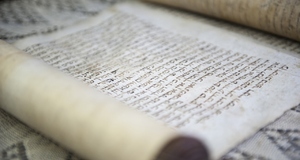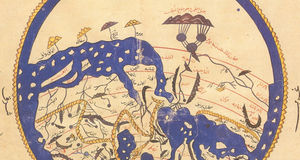The Position of Jews and Christians in the Ottoman Empire
By
2010, Vol. 2 No. 05 | pg. 1/1
KEYWORDS:
The position of Jewish and Christian peoples under the Ottoman Empire is an issue that continues to be disputed today, almost a century after the official end of the Empire itself. Religious association typically determined status in the predominantly Muslim Ottoman Empire. According to Moshe Ma’oz, Christians and Jews were seen as “inferior subjects or as illegitimate denominations.”1 As a result, they were often discriminated against by the state entity. In contrast, other scholars may argue that the position of minorities under the Ottomans was lenient compared to minority treatment elsewhere in the world, such as in certain parts of Europe. According to Edward Said, abuses of “Orientalism,” which he described as a Western way of “dominating” or “restructuring” the history of the Middle East because of prejudice against Arab-Islamic peoples, has caused a misconstruction of the historical narrative.2 According to Bruce Masters, Westerners were typically biased against Muslims, and often distorted realities in the relationships between Christians, Muslims and Jews under the Ottoman Empire.3 As such, it must be noted that historical interpretations, or misinterpretations, must be intensely scrutinized when discussing the position of Jews and Arabs under the Ottoman Empire. In order to understand the position of Jews and Christians during the era, their official statuses must be described. They were considered Ahl al-Kitab, or “people of the book” (i.e. those who held monotheistic beliefs).4 As such, their treatment may have differed from that of polytheistic believers under Ottoman rule, since Muslims accepted the “prophets” of Christianity and Judaism. As a result, they were given state protection, or Ahl al-Dhimma. This tradition of protection for minorities can still be seen today in modern day Tehran. Many Christian communities still remain in Iran. Since officially recognized religions still enjoy dhimma, the Christian communities are guaranteed protection from the state. An example of this protection is the symbolic painting of a stern looking Ayatollah Khomeini on the outside of an Armenian church in Tehran.5 The painting symbolizes the Ayatollah’s protection over the church—that he sees to their security “personally.” They enjoyed autonomy in religious affairs and also area such as education.6 In this sense, Jews and Christians enjoyed certain privileges under Ottoman Rule that was not granted to minorities in Europe, where Jews and Muslims were often persecuted or held back due to religious prejudice. That is not to say, however, that Jews and Christians enjoyed complete freedom under Islamic rule. They were seen as inferior by both the government and by many people. Put in simplistic terms, the superiority complex held by Muslims in the Ottoman Empire can likely be attributed to their acceptance of the Prophet Muhammad as the final prophet, a belief that Christians and Jews did not aspire to. Their failure to do so may have caused Muslim rulers to view them in a substandard capacity. As such, they were required to pay a special poll tax, a jiyzya.7 While they were allowed to hold certain senior-level positions, such as financial advisers or physicians, they were always required to hold only those positions subordinate to their Muslim counterparts. They were even sometimes subjected to restrictions in dress, or were harassed by certain officials and neighbors. This shows that despite the granting of dhimma to the Christians and Jews, unofficial acts of prejudice were sometimes condoned.8 There was a certain sense of social segregation between Muslims and non-Muslims. Stereotypes categorizing Christians and Jews were often utilized in proliferating the gap between them. Even in areas of close proximity between the groups, where they lived and worked as neighbors, they were rarely included in the communal “we” of the neighborhoods.9Jews and Christians were very rarely dealt with on an individual basis; instead they were clumped into a millet system, which dealt with them as a community. For example, the Rabbi, in a millet-bashi, acted as the administrative officer responsible for acting as representative for his community to the state. Rather than collecting the jiyzya individually, they paid the state collectively, with a Chief Rabbi administrating. This was the case for all recognized Christian and Jewish communities.10 The millet system allowed the respective communities to enjoy a certain level of administrative autonomy under their representative. The millet leader may have held certain powers to enforce and legislate laws. He also served to plead the causes of his community to the Ottoman government.11 According to Roderic H. Davison, millets served to some extent as “agents of change,” who helped bring about certain modernization and reformation in the Ottoman Empire. He attributes this to the contact individuals within the non-Muslim millets had with Europe.12 Armenians, Greeks and Jews helped to import the printing press into the Ottoman Empire.13 The government also enforced changes in order to revive the Ottoman Empire, such as improving the army and opening embassies in Europe. A 1956 decree from the Sultan Abdülmecid established communal autonomy on the basis of equality, but left administrative aspects of personal status, such as marriage and education, to the millets. This also enforced a system of tax collection from all citizens, not just Christians and Jews, as well as a mandatory army service for all. However, what happened in practice was a bit different; most Christians and Jews response to army reforms was to pay a special tax exempting them from army duty, rather than fulfilling the mandatory service.14As such, in some cases, the millets were agents of change in modernizing the Ottoman Empire; they acted as the “channels” or “filters” of change.15 In others, they acted as opponents to reform to protect their own interests, such as in the case of military service. According to Davison, acceptance of certain modernization by non-Muslim millets also caused non-acceptance by Muslims on religious and anti-Western grounds. Although, it is important to remember Said’s orientalist reconstructing of history on the basis of anti-Muslim prejudice when considering Davison’s claim. The position of Christians and Jews under Ottoman rule can be debated in historical constructs. While religious association often determined the social status of citizens, religious minorities were usually treated with a level of tolerance that was not often enjoyed by minorities under Christian rule. However, it is important to remember that we may never truly understand the position of minorities under Ottoman rule because historical interpretations often lead scholars astray.
Braude, Benjamin. “Foundation Myths of the Millet System.” In Christians and Jews in the Ottoman Empire: The Functioning of a Plural Society, edited by Benjamin Braude and Bernard Lewis, 69-88. Teaneck: Holmes & Meier Publishers, 1982. Davison, Roderic H. “The Millets as Agents of Change in the Nineteenth-Century Ottoman Empire,” In Christians and Jews in the Ottoman Empire: The Functioning of a Plural Society, edited by Benjamin Braude and Bernard Lewis, 319-337. Teaneck: Holmes & Meier Publishers, 1982. Ma’oz, Moshe. “Middle Eastern Minorities: Between Integration and Conflict.” Policy Papers 50 (1999): 5-9. Masters, Bruce. Christians and Jews in the Ottoman Arab World: The Roots of Sectarianism. Cambridge: Cambridge University Press, 2001. Said, Edward. Orientalism. New York: Vintage Books, 1979. The Armenians in Tehran. Video. 1.) Moshe Ma’oz, “Middle Eastern Minorities: Between Integration and Conflict,” Policy Papers 50 (1999): 5. 2.) Edward Said, Orientalism (New York: Vintage Books, 1979), 3. 3.) Bruce Masters, Christians and Jews in the Ottoman Arab World: The Roots of Sectarianism. (Cambridge, Cambridge University Press, 2001), 2. 4.) Ma’oz, “Middle Eastern Minorities,” 6. 5.) The Armenians in Tehran, Video. 6.) Ma’oz, “Middle Eastern Minorities,” 6. 7.) Ibid. 8.) Ibid. 9.) Masters, Christians and Jews in the Ottoman Arab World: The Roots of Sectarianism, 16. 10.) Benjamin Braude, “Foundation Myths of the Millet System,” in Christians and Jews in the Ottoman Empire: The Functioning of a Plural Society, ed. Benjamin Braude and Bernard Lewis (Teaneck: Holmes & Meier Publishers, 1982), 69. 11.) Ibid., 81. 12.) Roderic H. Davison, “The Millets as Agents of Change in the Nineteenth-Century Ottoman Empire,” in Christians and Jews in the Ottoman Empire: The Functioning of a Plural Society, ed. Benjamin Braude and Bernard Lewis (Teaneck: Holmes & Meier Publishers, 1982), 319. 13.) Daphne Tsimhoni, “The Tanzimat: Ottoman Reforms and the Millets,” February 11, 2010. 14.) Ibid. 15.) Davison, “The Millets,” 331. Suggested Reading from Inquiries Journal
Inquiries Journal provides undergraduate and graduate students around the world a platform for the wide dissemination of academic work over a range of core disciplines. Representing the work of students from hundreds of institutions around the globe, Inquiries Journal's large database of academic articles is completely free. Learn more | Blog | Submit Latest in History |
















